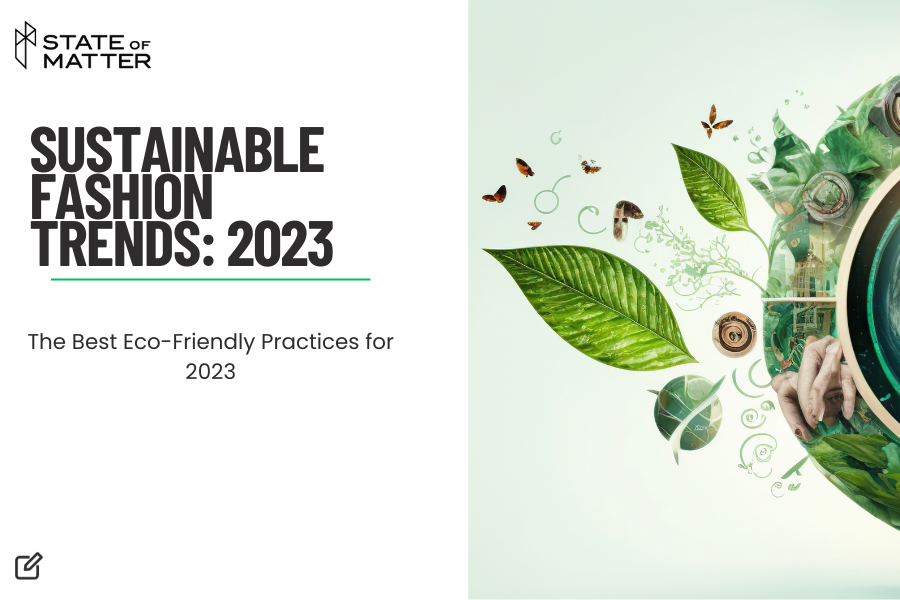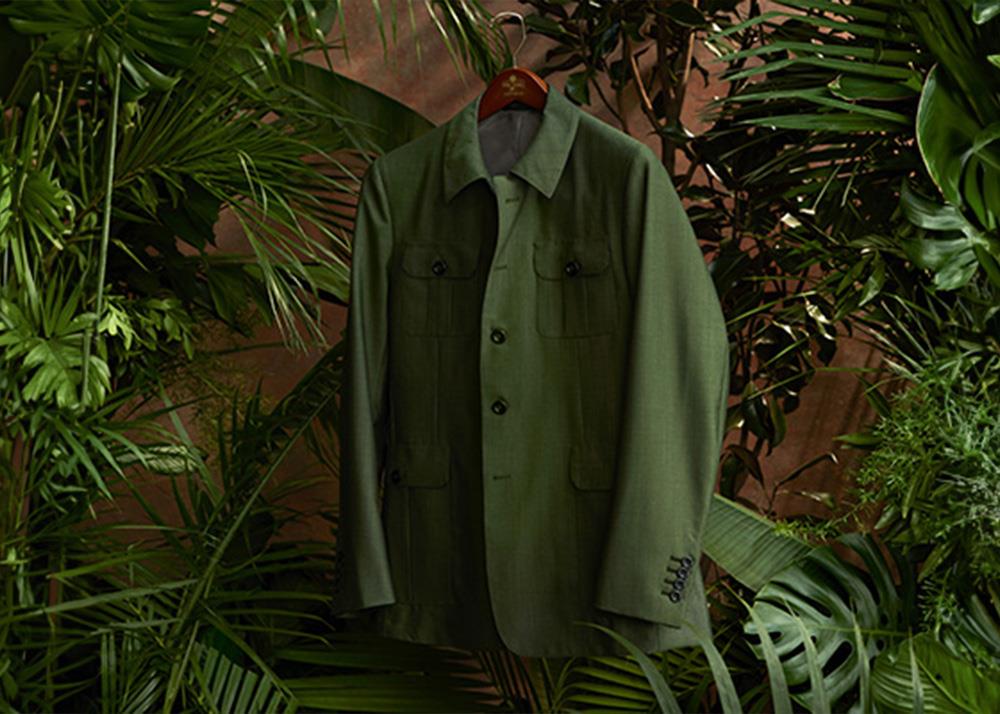Cape Town Sustainable Fashion Week: Highlighting Green Innovations
Stay Ahead of the Curve by Exploring Cutting-edge Style Fads
In a market as dynamic as fashion, staying in advance includes even more than just adhering to present fads-- it demands an expedition of advancement. The merging of innovation and style proclaims a new period of consumer interaction.

Welcoming Smart Textiles
Recently, the garment industry has experienced a transformative change with the assimilation of clever fabrics, a cutting-edge development that blends innovation with textile. This advancement stands for not just a blend of visual appeals and performance however likewise a considerable leap towards sustainability and personalization in vogue. Smart textiles, also known as e-textiles, embed advanced electronics such as sensing units and conductive strings within the textile, enabling garments to communicate with the user or the setting.
These textiles are created to check physical criteria, such as heart rate or body temperature, offering real-time health analytics. Past wellness applications, clever textiles are additionally being made use of for flexible garments, which can change color or pattern in feedback to ecological stimuli, thus offering a vibrant style experience.
Furthermore, the development of energy-harvesting fabrics that produce power from motion or sunlight is leading the way for self-sufficient wearable technology. This technology is attracting ecologically conscious customers and designers intending to minimize the environmental footprint of style. As research study and development in this area advancement, clever fabrics are anticipated to come to be progressively widespread, improving the landscape of modern style with their multifunctional capabilities.
The Surge of 3D Printing
Reinventing the production landscape, 3D printing has become a game-changer in the fashion business. This advanced modern technology has enabled developers to push the limits of creativity, producing elaborate and personalized garments that were formerly unbelievable. By leveraging electronic style and additive manufacturing, 3D printing promotes the development of intricate geometries and patterns, allowing developers to experiment with brand-new structures and structures.
A noteworthy advantage of 3D printing in vogue is its capacity to produce on-demand, lessening waste and lowering stock requirements. This performance not only maximizes production processes yet additionally enables for fast prototyping, allowing developers to bring their visions to life in a shorter duration. Furthermore, 3D printing supports customization to a degree unrivaled by traditional approaches, supplying special designs and individualized fits tailored to specific customer choices.
The rise of 3D printing has actually also democratized fashion, making it available to emerging developers that can currently make high-quality pieces without significant monetary investment in traditional manufacturing facilities. As technology proceeds to advance, the fashion business is positioned to harness the full capacity of 3D printing, exploring brand-new materials and methods that will definitely redefine just how style is conceived and produced.
Lasting Fashion Innovations
As the garment industry grapples with the pushing demand for environmental obligation, sustainable style innovations have arised at the leading edge of transformative modification. The expanding understanding of environmental effect has actually fueled a shift in the direction of even more eco-conscious techniques and products. Designers and brands are now prioritizing sustainability, integrating browse around this web-site approaches that decrease waste and reduce carbon impacts.
One significant advancement is the surge of circular style, which highlights recycling and upcycling to prolong the lifecycle of garments. This approach not only decreases waste yet also urges consumers to take on a much more mindful strategy to apparel intake.
Another innovation exists in the fostering of cutting-edge dyeing methods that utilize natural dyes or waterless procedures, thus reducing the vast amounts of water and chemicals traditionally used in fabric dyeing. Additionally, improvements in biotechnology have actually caused the development of lab-grown natural leather and textiles, supplying cruelty-free and eco-friendly options to standard materials. Via these pioneering initiatives, the garment industry is making meaningful strides towards a much more lasting future.

Tech-Integrated Apparel
Tech-integrated apparel represents a cutting-edge blend of style and innovation, reshaping just how people engage with their clothing. This ingenious domain name is marked by the inclusion of wise textiles and ingrained electronic parts, boosting both performance and aesthetic allure. From health and fitness trackers embedded in sportswear to heated coats regulated through smartphone apps, tech-integrated clothing uses customers extraordinary ease and flexibility.
Pioneering brands are driving this pattern, focusing on producing garments that react to ecological stimuli or individual commands. For instance, some garments can change color or pattern in reaction to temperature shifts, while others include biometric sensing units to check health and wellness metrics like heart price or stress and anxiety levels. The smooth assimilation of innovation right into fabrics also prolongs to environmental sustainability, with efforts to develop self-cleaning fabrics or garments that change to weather conditions, thus reducing the demand for numerous layers.
Furthermore, the advent of wearable technology is not simply restricted to apparel but prolongs to accessories like watches and glasses, additional expanding the range of tech-integrated fashion. As the sector proceeds to introduce, the possibility for personalization and personalization in clothing expands, using customers one-of-a-kind, tech-enhanced fashion experiences that provide to their private demands and choices.
Future of Virtual Fashion
Recently, the anchor future of virtual fashion has emerged as a transformative force within the sector, leveraging innovations in digital technology to redefine just how style is created, experienced, and taken in. By incorporating increased reality (AR), online fact (VIRTUAL REALITY), and 3D design tools, designers can currently craft immersive and interactive experiences that go beyond typical fashion boundaries. Virtual fashion enables the production of garments that exist exclusively in digital atmospheres, offering unlimited opportunities for development without the restrictions of physical manufacturing.
This electronic change not just presents opportunities for creative expression however additionally addresses sustainability issues inherent in typical fashion methods. Cape Town Sustainable Fashion. By getting rid of the need for physical resources, virtual fashion decreases waste and minimizes carbon impacts. Moreover, the increase of virtual style lines up with the raising consumer need for special and customized experiences, as online garments can be customized and customized to individual preferences easily

Final Thought
The style sector's future lies in the assimilation of ingenious modern technologies and lasting techniques. Online style is positioned to redefine customer interactions.
In recent years, the style sector has actually witnessed a transformative shift with the combination of wise fabrics, a cutting-edge development that blends innovation with material.As the style sector grapples with the pushing demand for ecological responsibility, lasting fashion innovations have emerged at the forefront of transformative change.In recent years, the future of virtual fashion has arised as a transformative pressure within the sector, leveraging innovations in electronic modern technology to redefine just how style is developed, experienced, and taken in. The increase of online fashion aligns with the enhancing consumer demand for personalized and unique experiences, as virtual garments can be tailored and customized to private preferences with ease.
The fashion sector's future lies in the assimilation of sustainable practices and cutting-edge modern technologies.